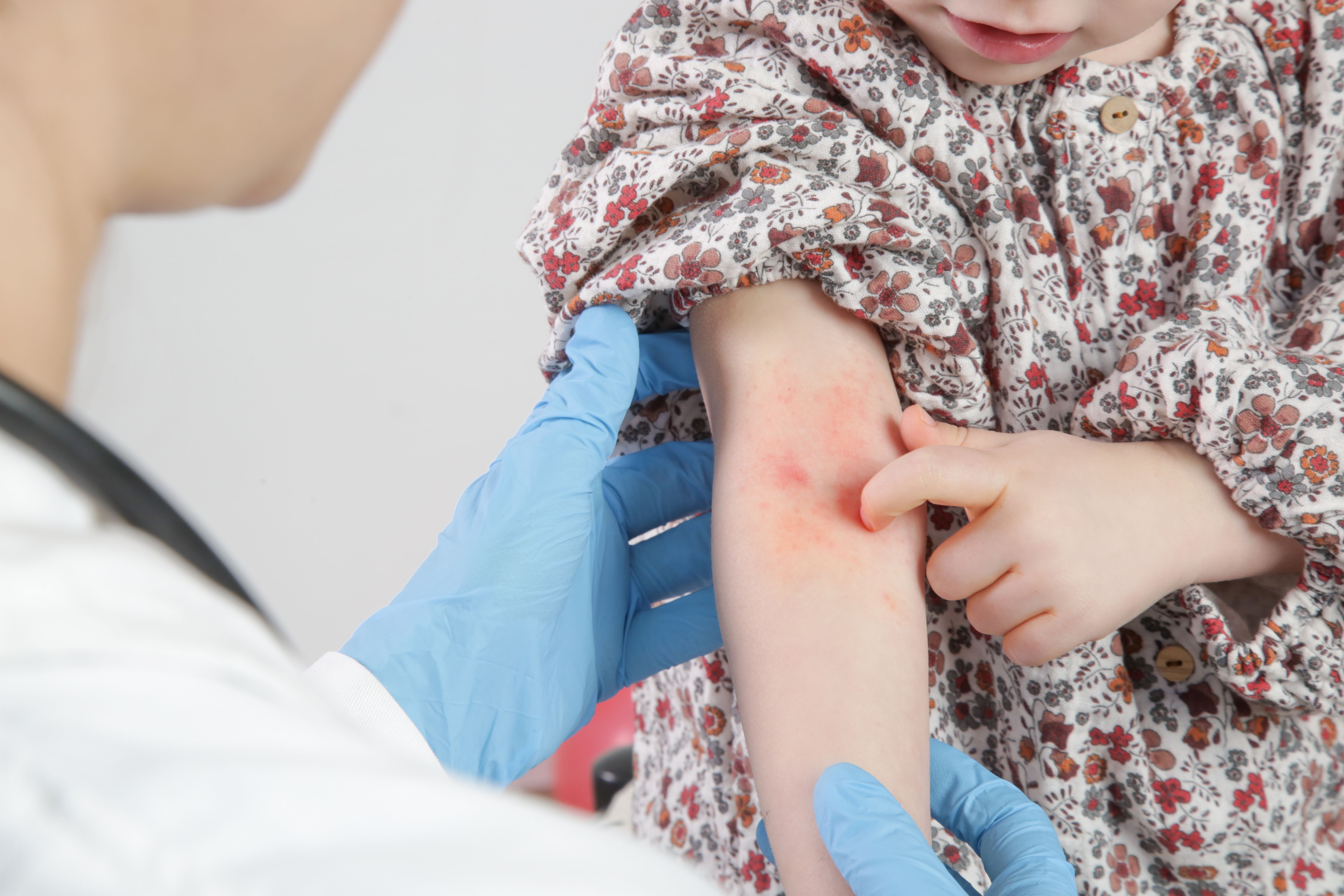- Acne
- Actinic Keratosis
- Aesthetics
- Alopecia
- Atopic Dermatitis
- Buy-and-Bill
- COVID-19
- Case-Based Roundtable
- Chronic Hand Eczema
- Chronic Spontaneous Urticaria
- Drug Watch
- Eczema
- General Dermatology
- Hidradenitis Suppurativa
- Melasma
- NP and PA
- Pediatric Dermatology
- Pigmentary Disorders
- Practice Management
- Precision Medicine and Biologics
- Prurigo Nodularis
- Psoriasis
- Psoriatic Arthritis
- Rare Disease
- Rosacea
- Skin Cancer
- Vitiligo
- Wound Care
Article
Skin Morbidities May Be Preventable Through Insulin Resistance, Obesity Treatment
Author(s):
Researchers analyzed dermatoses associated with obesity and insulin resistance in pediatric patients.
In a recent study,1 researchers found either an absence of frequently-associated dermatoses or no significant association between several dermatoses, obesity, and insulin resistance in children with obesity.
triocean/AdobeStock

The cross-sectional, observational, and prospective study sought to investigate the prevalence of obesity-related dermatoses in children with obesity. Furthermore, researchers sought to examine a potential association between dermatoses, insulin resistance, and skin color.
Participants (n=212) included children between the ages of 2 and 18 years of age who were of an average weight or considered clinically overweight or obese. All participants had been treated at a single clinic between October 2016 and May 2017. Families and caregivers of the children involved in the study were required to give consent for inclusion in the study.
Potential participants were excluded from the study if they did not meet the age criteria, had an underlying syndrome or endocrinopathy other than obesity, or if they had a body mass index (BMI) below the fifth percentile.
Researchers collected and identified several data points, including weight, height, BMI, Fitzpatrick skin type, and plasma glucose and insulin levels. Before collecting plasma glucose and insulin levels, all participants were required to fast for 10 hours. Then, researchers defined insulin resistance as values of 2.5 or greater as determined by the Homeostasis Model Assessment (HOMA).
111 participants made up the patient group, which consisted of children who met BMI criteria for being overweight or obese, while 101 participants made up the control group of average BMI criteria.
Researchers identified several dermatoses among the participant groups, including:
- Acanthosis nigricans
- Acne
- Acrochordon
- Androgenetic alopecia
- Bacterial infection
- Dystrophic cellulite
- Fungal infection
- Hirsutism
- Hyperhidrosis
- Keratosis pilaris
- Plantar hyperkeratosis
- Seborrheic dermatitis
- Stria distensae
- Varicose vein
- Viral infection
- Xerosis
Of these, the most frequently-occurring dermatoses in the patient group consisted of keratosis pilaris, stria distensae, hyperhidrosis, acanthosis nigricans, plantar hyperkeratosis, bacterial infections, and acrochordon.
Dermatoses with a positive correlation between formation and insulin resistance included keratotis pilaris, stria distensae, acanthosis nigricans, hyperhidrosis, plantar hyperkeratosis, hirsutism, bacterial infections, seborrheic dermatitis, and acrochordon.
Researchers also found the incidences of certain dermatoses to increase as Fitzpatrick skin type increased in scale, including keratosis pilaris, acanthosis nigricans, and acrochordon. However, researchers used logistic regression to determine that darker skin types do not have an automatically increased probability of developing acrochordon.
Certain skin types, such as type 3 and 4, when associated with a higher BMI, have a significantly higher risk of developing acanthosis nigricans—with patients with skin type 3 being at a 5.34 times risk, and patients with skin type 4 being at a 3.35 times risk, of developing acanthosis nigricans when compared to patients with skin type 1. Furthermore, a higher BMI and skin type 3 correlates to a 3.26 times risk of developing keratosis pilaris.
“We found a positive correlation between acanthosis nigricans, high BMI, and insulin resistance in children. In other studies, a positive correlation was found between obesity in children and the formation of acanthosis nigricans,” study authors wrote. “Dermal symptoms of obesity and insulin resistance may precede the diagnosis of diabetes mellitus and may be the first manifestations of diabetes mellitus. Early recognition and management of these cutaneous conditions improve the patient's quality of life and may prevent the occurrence of long-term sequelae associated with insulin resistance and hyperglycemia. On the contrary, a more effective and rapid response to the treatment of these dermatoses is obtained by the treatment of insulin resistance and obesity. Clarifying the physiopathology of these dermatoses enables the development of more effective treatment alternatives.”
Reference
- Kus MM, Mulayim MK, Kus C, et al. Dermatoses in overweight and obese children and their relationship with insulin and skin color. J Cos Dermatol. Published online 2023. doi:10.1111/jocd.15773
Newsletter
Like what you’re reading? Subscribe to Dermatology Times for weekly updates on therapies, innovations, and real-world practice tips.











